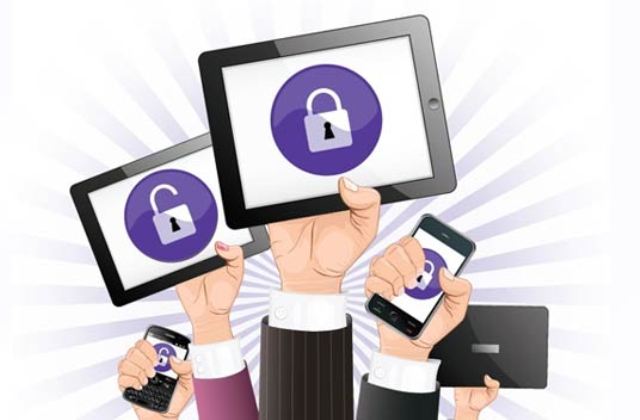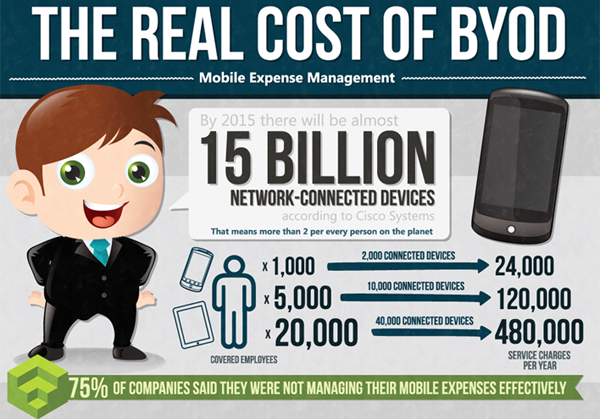4 Ways to Enhance Data Security in a BYOD Environment
More companies are creating Bring Your Own Device (BYOD) policies since remote workers and employees are upgrading their personal technology with the newest smartphones and tablets. This can dramatically cut down on your company’s hardware costs, since workers can use their own devices for work and personal purposes. However, BYOD environments can quickly disintegrate when data is leaked, lost, or accidentally shared via inappropriate channels.
Your IT department can take measures to avoid data loss or theft by investing in a Mobile Device Management (MDM) software solution.
1. Device accountability
Once a company co-opts a personal device for office use, it can become difficult to keep track of devices that contain work materials. For example, three employees might leave the company and take sensitive data with them. This creates a major liability for your business, since the data can then be shared with competitors or accidentally leaked. MDM software allows your IT department to create an inventory list and tag devices with employees’ names and software profiles. This way, your department can remotely remove sensitive business information from someone’s device if they leave the company.
These device inventory lists can also come in handy during repairs and technical support. MDM software will often catalog the serial number for a smartphone or tablet, giving your company an easy reference number when contacting tech support.
2. Loss prevention
MDM solutions often tie in with remote tracking and erase systems, such as Microsoft ActiveSync, Android Device Manager, or Apple’s iCloud. If an employee’s smartphone or tablet is lost or stolen, your company can lock the device, locate it with GPS or wipe all personal data from it. This can come in handy if you believe that technology has been stolen or if you fear that sensitive data will be visible to unauthorized users.
3. App security
Some MDM software can help you deploy proprietary corporate apps so that employees are restricting their work to business-only software. This helps prevent users from mixing work and personal content, whether it is done intentionally or accidentally.
Of course, you should also examine the security of the mobile operating system that you are using. Apple’s software is locked to the App Store market, making it extremely difficult for users to download apps that are infected with malware. However, the Android platform gives you more customization options, when it comes to OS modification and app variety.
4. Update control
MDM software can help your IT department control device updates, from a system level all the way to password security. For example, you can enforce a strict password update timeframe, so that employees update their password once every two or three months. Your IT department can also see what OS version a device is running, then suggest an OS update if the user’s devices is no longer compatible with current app versions. OS updates can reinforce a device’s security, helping your company rest easy knowing that data threats have been reduced. Updates can also dramatically improve the functionality of your employees’ mobile devices.
MDM software can be a major boon to company with BYOD environments. They allow your IT department to reduce points of vulnerability on personal devices used for business. These solutions can also extend to cover your in-house and loaner technology. Partner up with your IT professionals to execute an MDM strategy that makes sense for your business. Ultimately, these proactive security measures can save your business time and money, especially as you respond to potential data leaks, technology theft, and loss.






![BYOD: The truth about telecom expense management 5 The Real Cost of BYOD [Infographic]](http://www.xigo.com/images/byod_narrow.jpg)